A true hub of southern Laos, Pakse is also the capital of Champassak province, founded in 1905 by the French. Below is some essential information for your trip to Pakse, Laos.
General Information
This is an important commercial crossroads around the trade of wood, coffee, tea, and cardamom. Pakse, located on the banks of the Mekong, witnessed the recent construction of a bridge joining Thailand to facilitate trade with this country.
Pakse inevitably sees many travelers pass through. Without particular charm, apart from the old French houses and its market, the largest in Laos, it serves as a starting point for great excursions such as Wat Phu, the Bolaven plateau, and the 4000 islands.
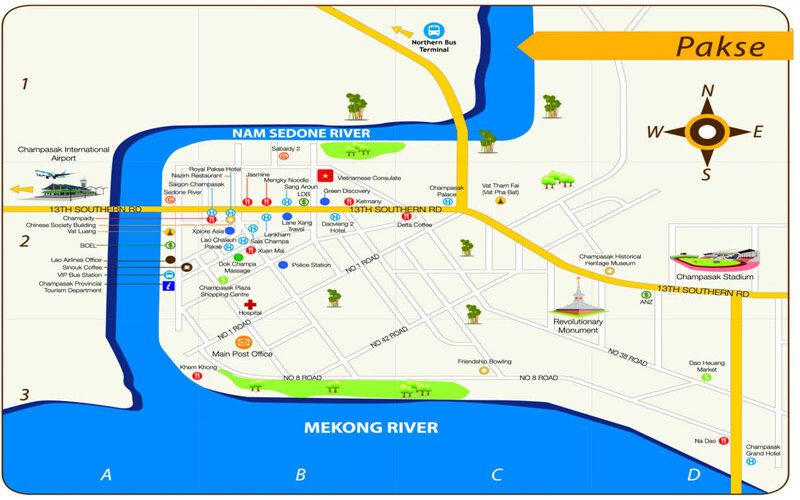
Panoramic view of Pakse
Weather and Best Time to Visit Pakse
Pakse has a tropical climate. The hot season in this region runs from March to May when temperatures can potentially reach 40°C. The rainy season is from May to October and traveling during this period can be interrupted due to inconveniences like damaged muddy roads. On average, the hottest month is April and the coolest is December. However, the temperature levels tend to remain high throughout the year, the rains are mainly limited to May to October, and July is the wettest month. Therefore, Pakse can be visited throughout the year, depending on the type of activity you have planned.
The best time to visit Paske is from November to January, which presents the dry and cool season. Although the climate is pleasant, the price of the service is more expensive than in the other seasons, moreover, in Laos in general and in Pakse in particular, the number of tourists traveling to Laos during this period is the most important.
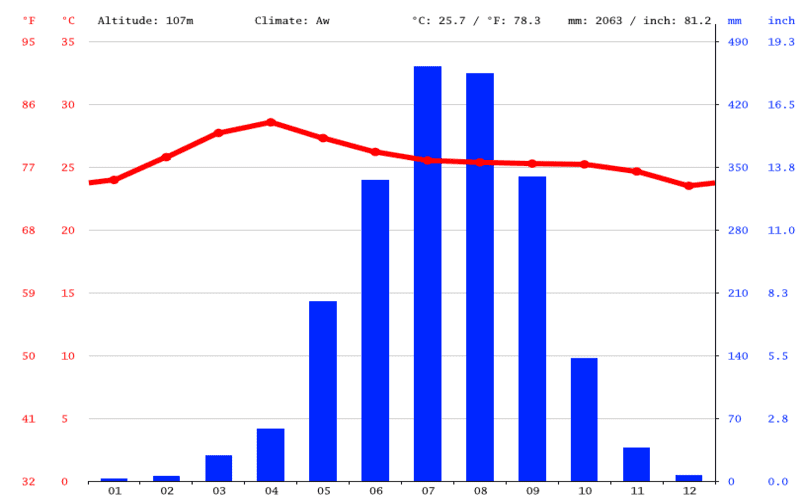
Weather of Pakse
Getting to Pakse
By plane
Pakse Airport is a small airport. There are few flights per day. However, you can reach Pakse from:
- Bangkok: daily flights with Laos Airlines, Thai Airways, Bangkok Airways
- Ho Chi Minh City: daily flights with Cambodia Angkor Air
- Siem Reap: daily flights with Laos Airlines
By bus
The bus is an alternative to the plane ticket. As the prices are low, it is the most popular means of transport in Laos. There are 4 bus stations in Pakse:
- Chitpasong Bus Station: Also called VIP Station or Pakse Central Station. It is located in the heart of the city.
- International station: located south of the city
- Kriang Kai Station: Known as KM2 Bus Station.
- Station 8 KM Bus Terminal: located, as its name suggests, 8 km from the city center
Accommodation in Pakse
All the hotels are generally equal in this area and the prices are essentially the same. Here are some of the best hotels that serve breakfast and have a great view of the city:
- Champasak Grand Hotel – 4*
- Athena Hotel – 4*
- Arawan Riverside Hotel – 4*
- Champasak Palace Hotel – 3*
- Pakse Hotel & Restaurant – 3*
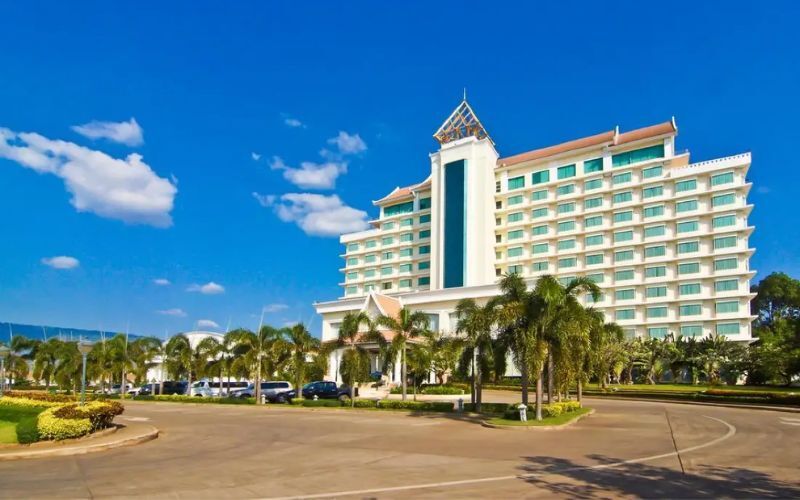
Champasak Grand Hotel
Must-visit Destinations in Pakse
Pakse is located at the confluence of two rivers, the Sedon, and the Mekong. The main tourist area is on Route 13. This route, which is more familiar to travelers, is surrounded by restaurants, cafes, motorbike and bicycle rental shops, ATMs, pensions, and many more.
Wat Luang
Wat Luang temple is one of the oldest and most splendid among the 20 wats in the center of Pakse. Dating back to 1935, Wat Luang was originally built to serve as a Buddhist school providing numerous English, business, and cultural studies courses to monks.
Although it has lasted for years, Wat Luang temple is so tidy and clean that visitors are completely addicted to the healthy air and restful space. You will be amazed by the exquisite tradition of the Lao style through the elaborate architecture of the tiled roof, concrete pillars, and wooden doors.
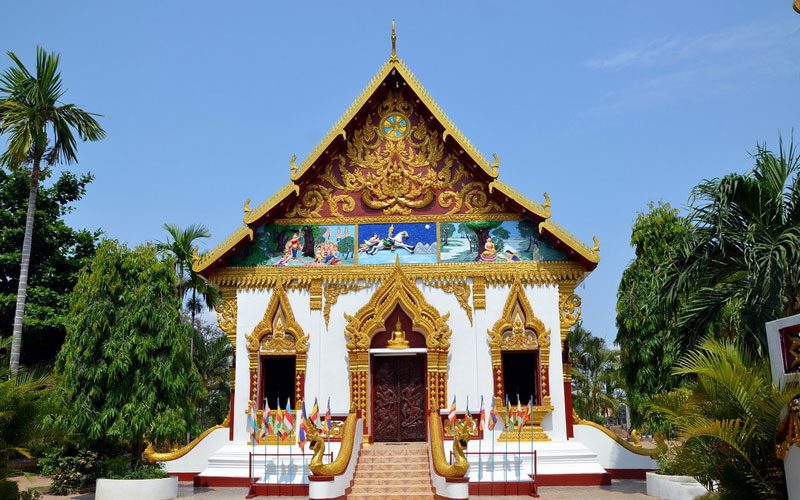
Wat Luang
Wat Phabad
Wat Phabad is the school of the Buddhist monsignor. Rumor said that Buddha left his mark here, in the largest and oldest temple in Pakse.
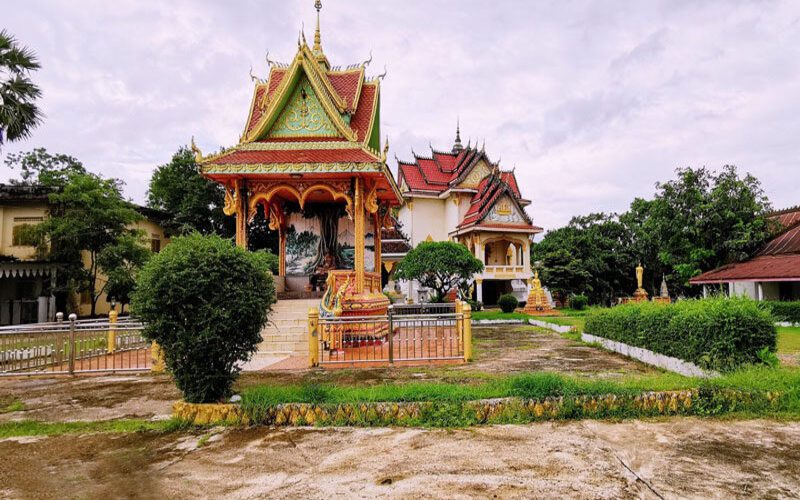
Wat Phabad
Ban Keo Somphanh
It was the former camp of the French army. It has the most beautiful rice field in Pakse and houses the oldest market in the city.
Big Buddha – Wat Phou Salao
Hundreds of golden Buddha statues, all donated by Lao residents, present perfect straight lines as you reach the viewpoint of Wat Phou Salao, Pakse. With stunning views of the main city in southern Laos and the meandering Mekong River, the temple atop the mountain of the same name is a fantastic place to watch the sunset.
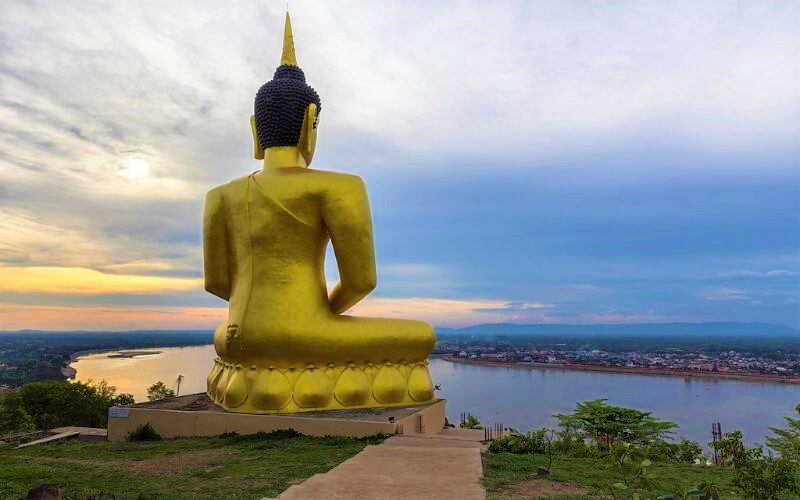
Big Buddha – Wat Phou Salao
Talat Dao Heuang
This vast market located near the Lao-Japanese bridge is one of the largest in the country. It’s the most chaotic in the food service areas but sells nearly everything you need, from herbal medicine to cell phones. It is definitely worth taking a walk there.
Palace of Prince Boun Oum Na Champasassak
One of the most attractive buildings in Pakse is the former palace of Prince Boun Oum Na Champasassak, which is now the Champasak Palace Hotel. The building is located downtown on Route 13, next to the bridge crossing the Xe Don River.
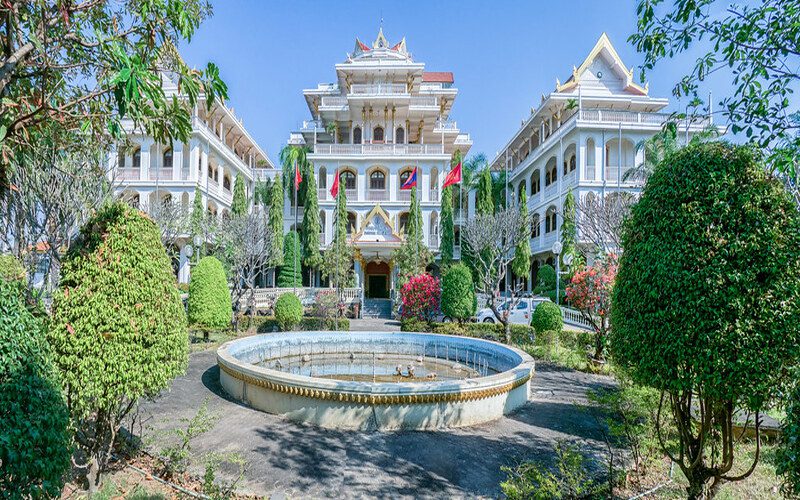
Palace of Prince Boun Oum Na Champasassak
Champasak Provincial Museum
Champasak Provincial Museum is a local museum in Pakse. It holds the unique history of the province, which collects all kinds of artifacts and documents to tell the story of Champasak. The museum also contains historical photos of cultural events, meetings abroad, and photos of important personalities. There are exhibits of musical instruments, stelae in the Tham script dating from the 15th to 18th centuries, an 11th-century water pot, pottery from across the province, and a model of Wat Phu. On the upper floor, you can find different ethnic clothes, as well as collections of textiles and jewelry.
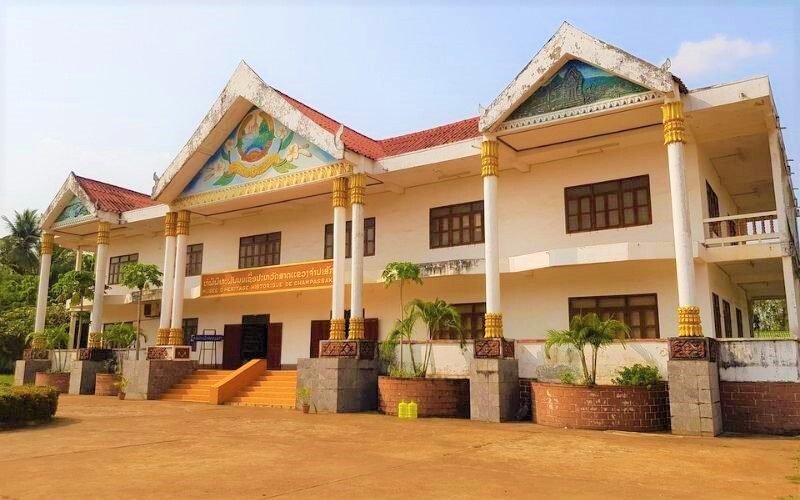
Champasak Provincial Museum
Destinations surrounding Pakse
Most of the attractions are located near Pakse, which is why this town has long been considered a famous departure point from the region to other nearby destinations. Pakse is a good starting point to get to:
Wat Phou
About 40 km south of Pakse are the ruins of Wat Phou, a 10th-century Khmer temple. The temple built at the foot of a mountain overlooking the plain is inscribed on the UNESCO World Heritage List. It consists of several barges, two palaces, several small shrines, a processional aisle and a main shrine dedicated to Shiva.
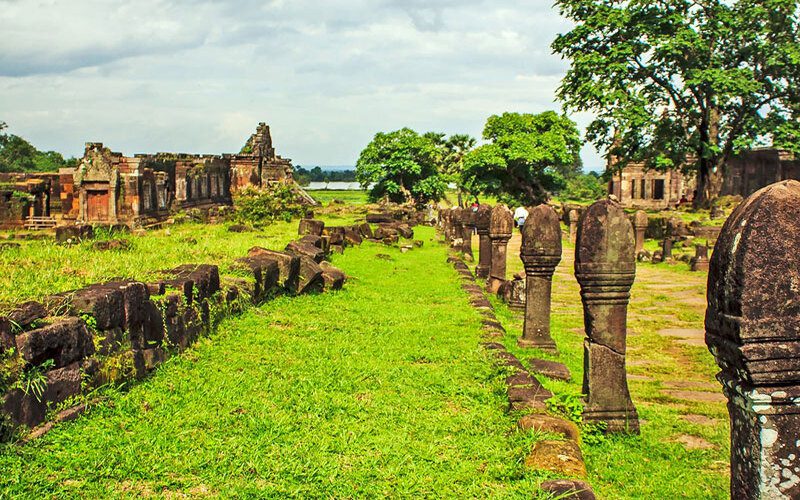
Wat Phou
Bolaven Plateau
The Bolaven Plateau has an average altitude of 1,000 meters above sea level and offers its visitors splendid landscapes of abundant primary forests, vegetable, coffee, pepper and tea plantations, green hills, vast expanses of paddy fields, spectacular waterfalls, and ethnic minority villages. In addition, the Boloven plateau comes from the name of the majority ethnic group that lives there: the Laven.
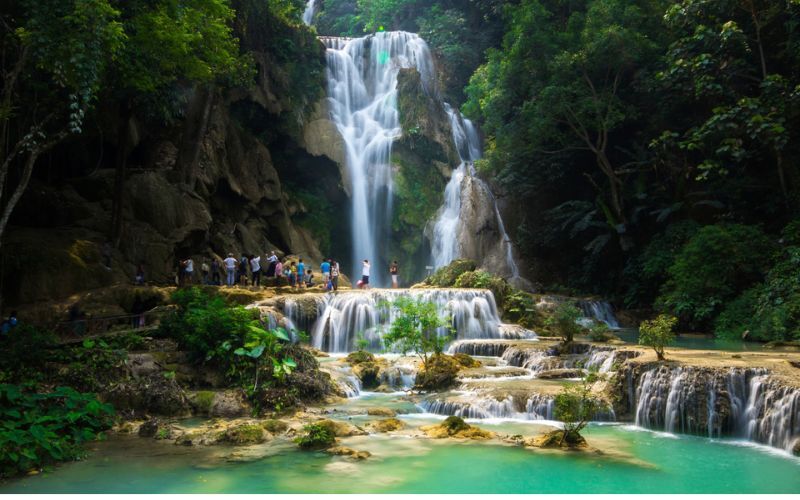
Boloven Plateau
Si Phan Don
Literally “4,000 islands”, it is the widest part of the Mekong, from the Tibetan plateau to the China Sea. This region is about 50 km from the Cambodian border. In the rainy season, the Mekong can reach up to 16 km in width; in the dry season, the lowering of the river leads to the formation of hundreds, even thousands of islets, from which comes the name of the region.
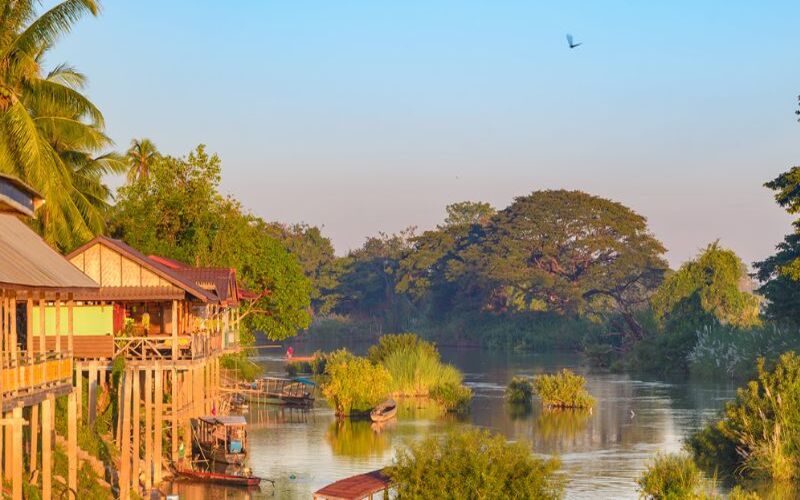
Si Phan Don
Must-eat Foods in Pakse
Kaipen
A popular snack, Kaipen is made from green freshwater seaweed, peppered with sesame seeds, and sun-dried in paper-thin sheets. These raw Kaipen are kept in rolls. For consumption, Kaipen leaves are pan-fried and usually served with jaew bong (chili paste).
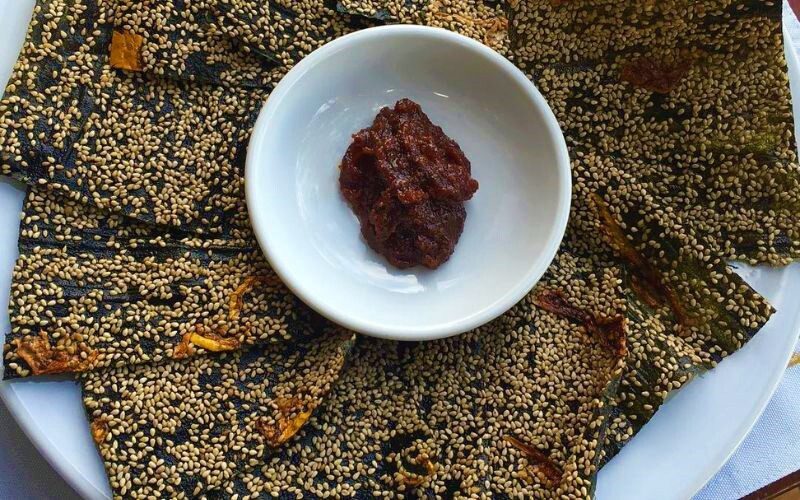
Kaipen
Khao Jee Paté (like Banh mi Vietnam)
Almost every street corner has a vendor selling this Franco-Lao fusion. The Khao Jee (or baguette) is cut in half and filled with lettuce, sliced tomatoes, carrots, onions and, optionally, cheese, moo yor (pork meat), chopped ham and pate or chili sauce. Khao Jee Paté will be good if you taste it with a cup of strong, filtered coffee.
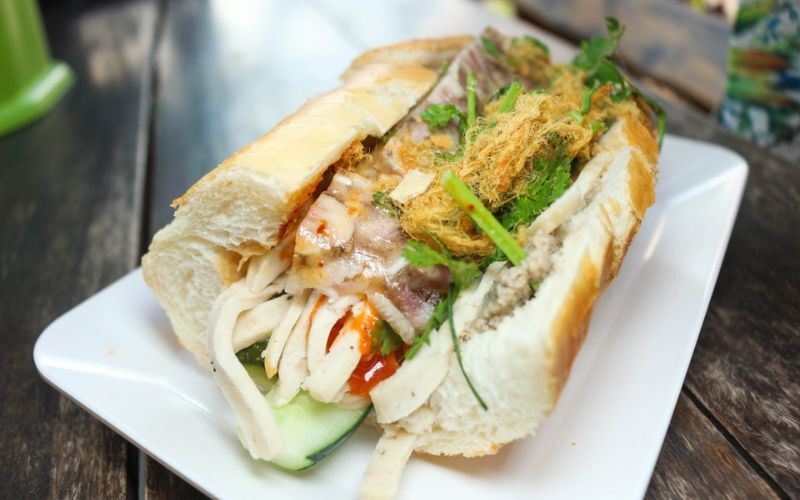
Khao Jee Paté
Larb
The word “spicy” pretty much sums up this mouth-watering, meat-based salad. One can use a variety of minced meat, then season it with mint leaves, chili, fish sauce, and lime juice.
Ground toasted rice (khao khua) is usually added, while the mixture is quickly stirred in a pot. Ground turkey larb is an essential Laotian specialty.
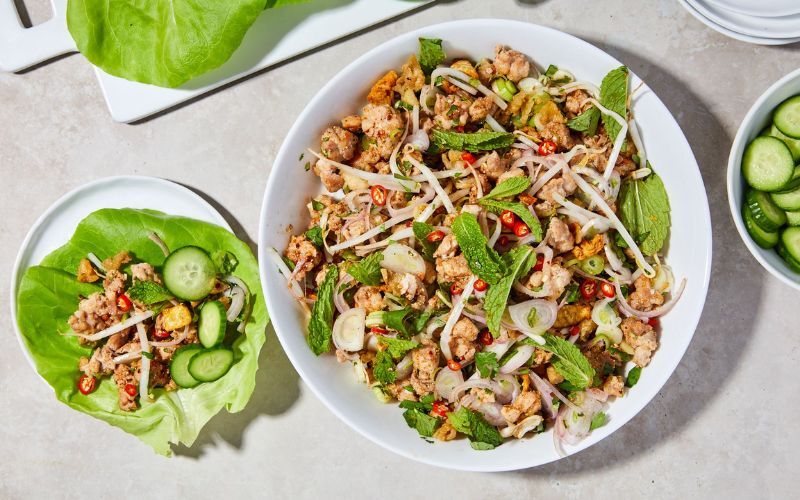
Larb
Apart from local Lao cuisine, restaurants in Pakse also serve Thai, Chinese, Indian, Western, and Vietnamese cuisine. For European and Vietnamese cuisine, visit the Ketmany Restaurant on Route 13. Breakfast here is Western style and the restaurant also serves Vietnamese cuisine with good vegetarian lasagna.
I hope our guide gave you an overview of Pakse. Contact us if you want more information about a trip to Pakse or Laos in general!